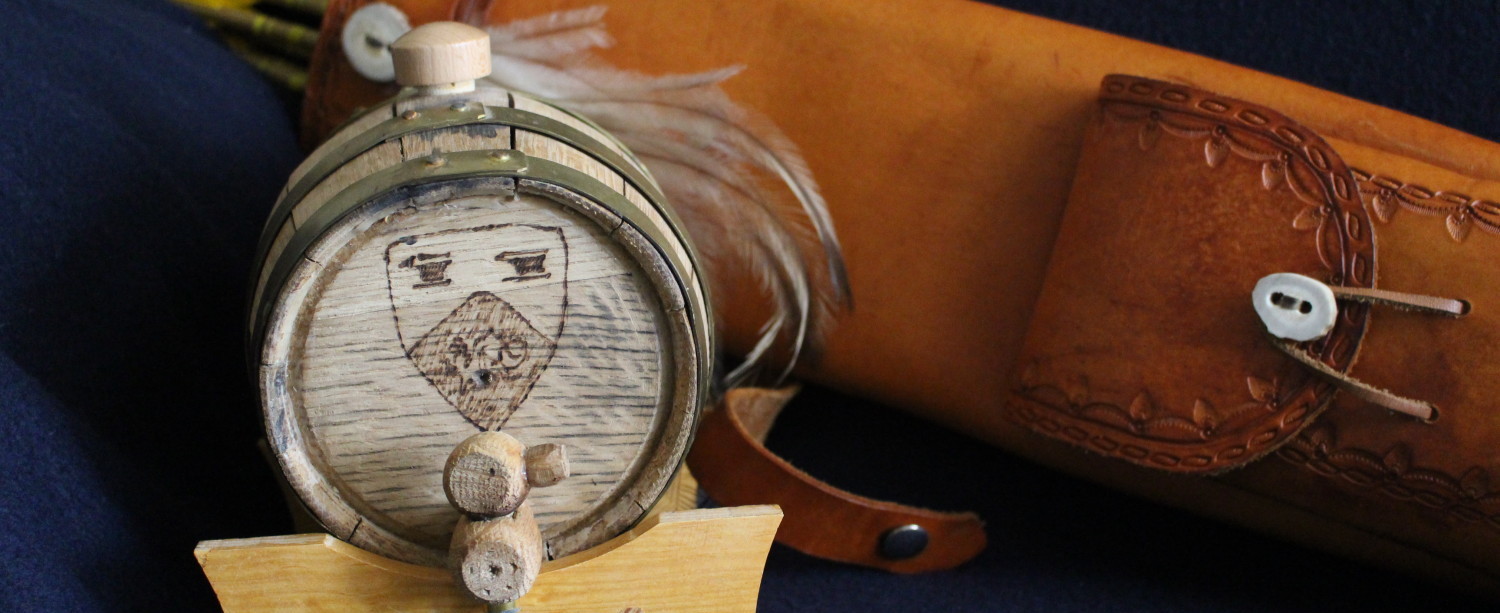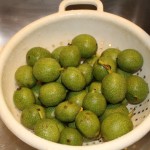Nocino – Part IV
Sipping and Science
I want to expand on my comments in Nocino – Part III regarding the flavor of the basic nocino recipe, even after aging for a year. I find it too bitter. What could I add to tone down the bitterness and astringency of the basic recipe? The obvious answer to this question would be a neutral sweetener. As quickly as I thought, “Add sugar,” I thought, “Add honey!” After all, honey was often used as a sweetener in Medieval times. So, I added some honey. The result tasted fine, but I still thought that there were some other flavors that would go well with this beverage.
When I finally got a taste of a commercial version of nocino (Nocino della Cristina) I thought that I tasted something akin to a fruit; maybe even a dried fruit. What fruit flavor might compliment the nocino’s flavor? Extra points would be awarded for a fruit available in Medieval times. It finally occurred to me that figs might fit the bill. Not only did I believe that “figginess” would enhance the nocino flavor, but I also knew that figs were frequent ingredients in a variety of Medieval dishes. My initial test of the complimentary flavor of figs on nocino was accomplished by visiting my favorite online grocery store: Amazon. I found a fig syrup made by Baar that allowed me to add some additional sweetness and the flavor of figs. I added the fig syrup to taste and found it to be an excellent choice.
So, honey and fig flavoring makes a pretty reasonable version of nocino. Comments from those who have tasted this combination have been positive, well, mostly positive. There are some folks who really do not like the flavor of nocino no matter what is added to it. Makes me wonder if these folks are supertasters!
As a person who loves to tinker with recipes, I thought that the nocino may benefit from some aging in an oak container. This practice of storing beverages in wooden containers is a Medieval practice that is still frequently used today. Many potables are stored and aged in wooden casks to impart the many delicious flavors from a charred barrel. I added some American Oak, medium charred cubes to a sample of nocino for a couple of months. Once again, I had a winner! Presently, I’m working on a formula to determine the amount of oak needed and time required for contact with the oak that will lead to the best outcome.
What else am I planning for the future? Two things. First, I plan to age some nocino in three different types of oak (American, Hungarian, and French) to see if I can tell any differences between them. I may not be able to detect any differences due to the aggressive flavor of nocino. Finally, up until the present, my recipes relied on using “modern” distilled spirits. This year, I plan to use brandy and grappa as my main steeping agents because there is documentation for their use in a Medieval time frame. I also read that some early makers of nocino may have used a simple red wine for steeping the unripe walnuts. So, I may see how that works too!
This was to be the final installment of my posts on nocino. However, as I wrote about my alterations of the basic nocino recipe and my plans for future concoctions, I realized that this was getting to be a long post. So, I am going to post a Nocino Part V on the “Science of Nocino” in a few days.


Pingback:Nocino – Part III | Casks and Quivers